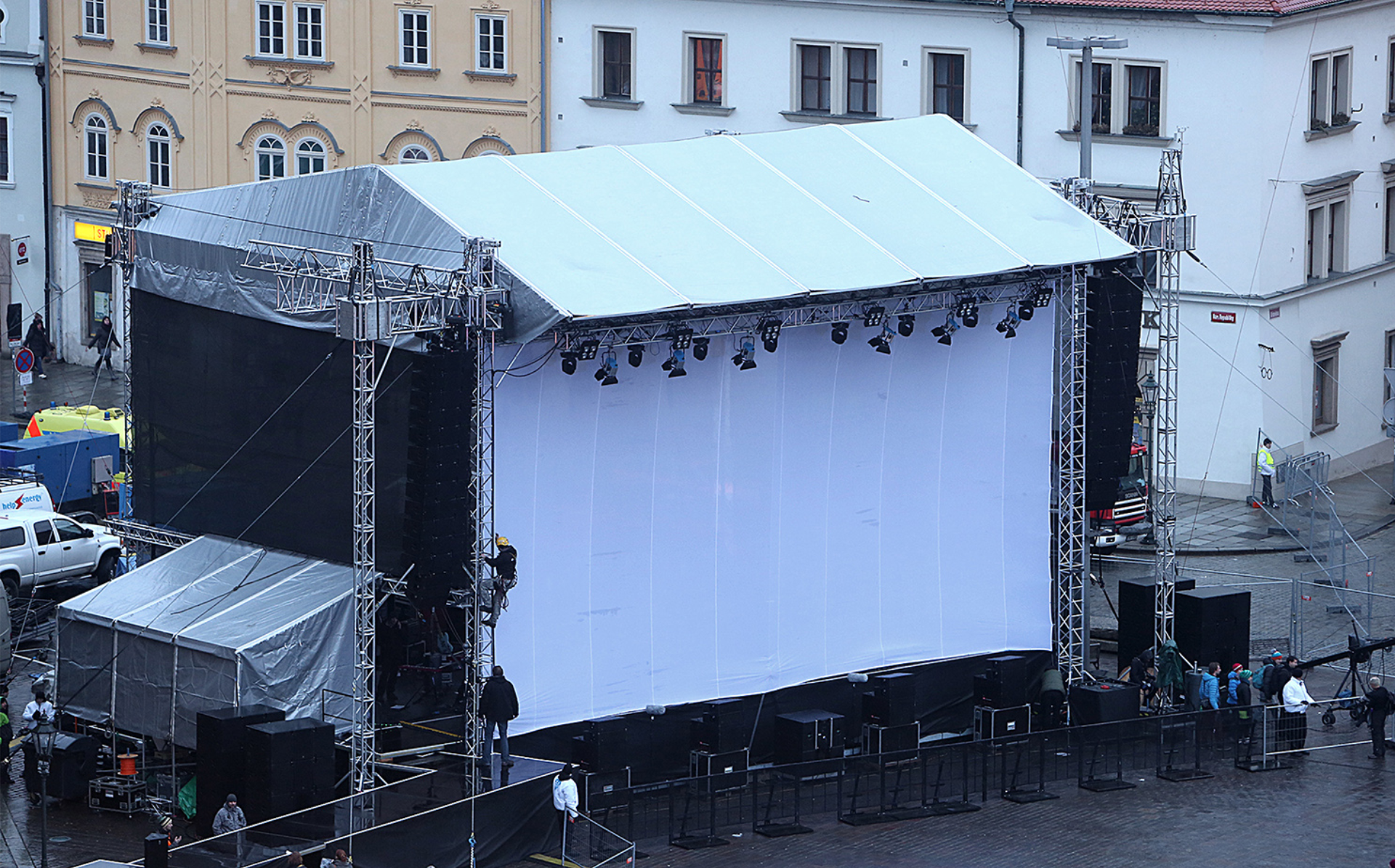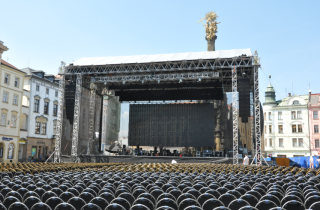
Ensuring the Safety of Your Truss Structures

It’s not an event without aluminum truss! Truss structures are often used to provide a base for many different applications, such as hanging lighting and audio equipment above a stage, building a finish line for a marathon, supporting LED screens, lining the halls of an exhibition center with tradeshow booths, or creating a stunning display at a carnival or fair. Safety is something that we take very seriously in the event industry, considering that these structures and applications of truss are often installed around people in public spaces and could pose a potential threat if not installed correctly or have not been properly evaluated for their desired application.
Audio and visual equipment is very heavy- especially items like large projection lights and PA speakers. Very often, aluminum truss structures are required to carry those loads, and must be appropriately designed and assembled with care. Safety is of the utmost concern when it comes to the event industry and use of aluminum trussing. It is extremely important that load capacity ratings are adhered to when designing and assembling these structures to ensure that customers, event goers, actors, and anybody on site is in a safe environment, without the worry of structural or equipment failures.
 Trusses manufactured in Europe are evaluated using the TÜV standards, which account for a 1.5% safety factor, meaning that load ratings are certified for accuracy, which allows designers and engineers to select the appropriate truss and designs to meet the requirements of the job. When selecting the aluminum truss for a design, it is important to check the specification sheets for the product line desired to ensure that the truss can carry the loads that will be imparted on the structure. Loading tables can be found in our catalog and on our website for quick and simple evaluations. Larger structures intended for more complex uses or with more stringent requirements (such as extreme loads, moving components, or potentially needing to stand up to extreme weather conditions when outdoors) should be evaluated by an engineer to ensure that everything will work together safely and efficiently.
Trusses manufactured in Europe are evaluated using the TÜV standards, which account for a 1.5% safety factor, meaning that load ratings are certified for accuracy, which allows designers and engineers to select the appropriate truss and designs to meet the requirements of the job. When selecting the aluminum truss for a design, it is important to check the specification sheets for the product line desired to ensure that the truss can carry the loads that will be imparted on the structure. Loading tables can be found in our catalog and on our website for quick and simple evaluations. Larger structures intended for more complex uses or with more stringent requirements (such as extreme loads, moving components, or potentially needing to stand up to extreme weather conditions when outdoors) should be evaluated by an engineer to ensure that everything will work together safely and efficiently.
While the standard structures and lengths of truss all have static engineering reports, there are many custom requests that may need additional evaluation. These types of requests should always be taken seriously, and all external factors should be carefully evaluated. Some challenges may be overcome simply by adding ballast to a structure, or by securing it directly to the ground with steel cables or other forms of rigging hardware. Weather also presents its own unique set of obstacles, and many projects may need to stand up to seismic activity, high wind speeds, extreme temperatures, flooding, or even the crushing weight of heavy snow.
Wind speeds can be a real challenge for large structures and different locations may have different requirements, depending on local regulations and the potential for dangerous weather. The Beaufort scale describes wind speeds in different degrees, which can be relayed to engineers to make their calculations for the structure.
With large roofs especially, canopy tops can act like a sail and generate lifting and pushing forces that can damage truss and other hardware, so it is important to have an accurate understanding of what types of winds the structure will have to sustain. With this knowledge, an engineer can calculate how much ballast will be needed to hold the structure down and how other anchors can be used to secure everything safely.
There are many ways to utilize ballast to help secure structures. For some applications, a larger and heavier baseplate may be all that is needed to keep the structure secured on the ground. Other projects may have more stringent requirements, such as the use of concrete blocks. For more temporary applications that involve smaller structures, sometimes just stacking a few sandbags or weights onto the baseplates of a structure keep it safe and secure.
It is always important to remember that most projects will have multiple challenges to overcome. While wind speeds are a big concern along the coastal areas, in the mountains you may face challenges from both the wind, snow, and freezing temperatures. Snow loads can be a real problem. It’s recommended to heat up the structure to melt the snow and reduce these loads, especially for a roof structure with an improper pitch. The recommended slope to shed snow is ten degrees, but to be safe this may need to be increased in some designs.
Although designing truss structures to endure various conditions around crowds can be complicated, we are here to make things easy. Our team can make sure the aluminum truss structures are designed to be safe and meet all your specific needs from the ground up!










